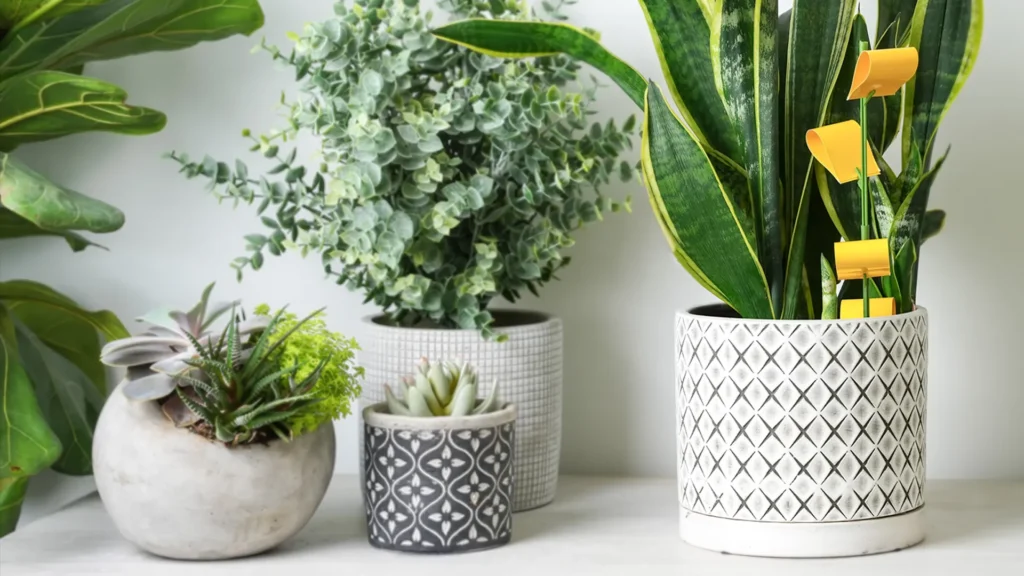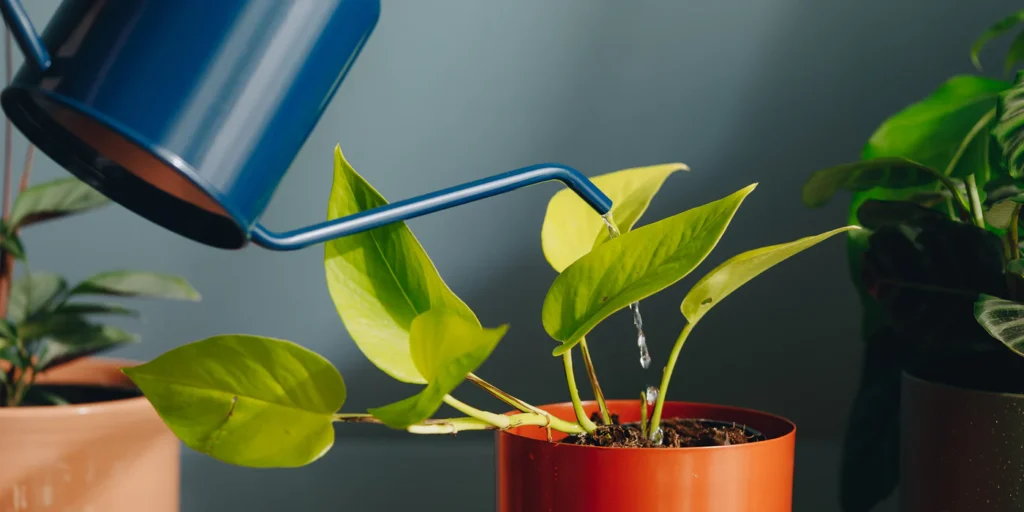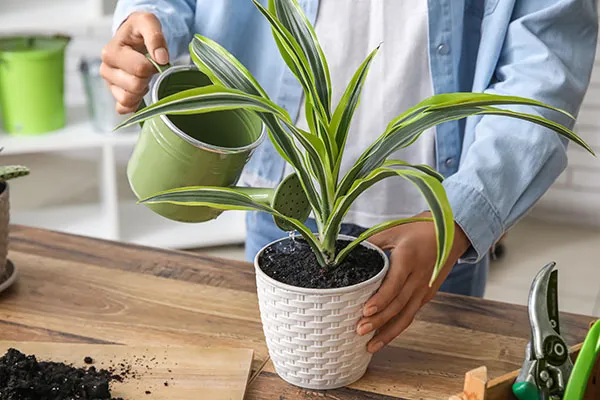Contents
Introduction
As the days get shorter and the temperatures start to drop, it’s not just the leaves that are changing—your indoor plants are also feeling the effects of fall. Just like we prepare our homes for the cooler weather, our beloved houseplants need a little extra TLC to stay happy and healthy through the fall season.
Why is fall plant care so important? Well, as outdoor temperatures dip, indoor environments can become a bit tricky for plants. The lower light levels, cooler air, and drier conditions can put stress on your green friends. But don’t worry—helping your plants adjust to fall is easier than you might think!
In this guide, we’ll walk you through everything you need to know to prepare your indoor plants for the cooler months ahead. We’ll cover how to make sure they get enough light, keep them at just the right temperature, and adjust your watering and humidity routines. Plus, we’ll dive into some handy tips for managing pests and diseases that can pop up as the seasons change.
Whether you’re a seasoned plant enthusiast or just starting to build your indoor garden, these fall plant care tips will help ensure your plants stay vibrant and thriving. So grab a cup of tea, get comfy, and let’s make sure your indoor jungle is ready to take on the autumn chill!
Understanding Seasonal Changes
As fall rolls in, it’s not just the outside world that’s changing—your indoor plants are also feeling the shift. Understanding how the changing season impacts your plants is the first step to keeping them healthy and happy through the cooler months.

Impact of Cooler Temperatures: When temperatures drop, the cozy warmth your plants enjoyed during summer can turn chilly. Cooler temperatures can slow down their growth and make them more susceptible to stress. This doesn’t mean you need to crank up the heat—just keep an eye on your plant’s environment and make a few adjustments to keep things comfortable.
Reduced Daylight Hours: With the arrival of fall, the days get shorter and natural light becomes less intense. Plants rely on light to photosynthesize and stay vibrant, so reduced daylight can mean slower growth. To help your plants cope, you might need to think about how you can boost their light exposure or adjust their location to catch the most sunlight.
By keeping these seasonal changes in mind, you’ll be better equipped to adjust your plant care routine. Remember, even though the weather is changing, you can help your indoor plants thrive with just a few simple tweaks to their care.
Adjusting Light Conditions
As fall settles in and daylight hours dwindle, your indoor plants might start feeling a bit in the dark. But don’t worry—there are plenty of ways to ensure they get the light they need to stay healthy and happy.

Assessing Light Levels: Start by taking a good look at where your plants are currently positioned. Are they getting enough sunlight? During fall, natural light isn’t as strong or abundant, so it’s important to check if your plants are still in their ideal spots. Move them closer to windows that get the most light, and keep an eye on how the angle of the sun changes throughout the season.
Supplemental Lighting: If your plants are still not getting enough light, it might be time to introduce some supplemental lighting. Grow lights are a fantastic way to mimic the sunlight your plants are missing. They come in various types, from fluorescent to LED, and can be set up easily to give your plants a boost. Just make sure to position the lights at the right distance to avoid burning your plants.
Positioning Plants: Finally, think about repositioning your plants to take full advantage of the light available. Placing them in south-facing windows or rotating them regularly can help them get the most out of the sunlight that’s there. It’s all about finding the sweet spot where they can soak up those precious rays.
By adjusting your plant’s light conditions, you’ll help them continue to thrive despite the fall season’s changes. A little extra light can go a long way in keeping your indoor garden vibrant and flourishing.
Temperature Management
As the chill of fall sets in, keeping your indoor plants cozy and content is key. Changes in temperature can impact your plants’ health and growth, so it’s important to manage their environment carefully.
Maintaining Ideal Temperature: Most indoor plants thrive in a stable temperature range. Generally, they prefer temperatures between 60-75°F (15-24°C). As outdoor temperatures drop, make sure your indoor space stays within this range. Avoid letting your plants sit in drafty areas or near cold windows. A consistent temperature helps them stay healthy and reduces stress.
Thermometers and Heating Solutions: To keep track of the temperature, consider using a thermometer. This will help you monitor the indoor climate and make adjustments if necessary. If your home gets a bit chilly, you might need a space heater to warm things up. Just make sure it doesn’t blow directly on your plants, as sudden temperature changes can be harmful.
Heat Sources to Avoid: While heaters can help maintain a warm environment, placing plants too close to them can cause issues. Avoid putting your plants near radiators, fireplaces, or other heat sources that can create hot spots. These can dry out the air and stress your plants. Instead, aim for a steady, moderate temperature that won’t fluctuate too much.
By keeping an eye on your plant’s temperature and making a few simple adjustments, you’ll help them stay comfy and healthy through the fall season. A little attention to their temperature needs can make a big difference in their overall well-being.
Watering Practices
With the fall season comes cooler weather and often drier indoor air, which can change how your plants need to be watered. Adjusting your watering routine is crucial to keep your plants thriving as the seasons shift.

Adjusting Watering Frequency: As temperatures drop, your plants’ growth slows down, and they need less water. Overwatering can lead to problems like root rot, so it’s important to adjust how often you water. Instead of sticking to a strict schedule, check the soil’s moisture level regularly. If the top inch of soil feels dry, it’s time to water. If it’s still moist, hold off for a bit longer.
Checking Soil Moisture: To avoid overwatering, use a simple method to check soil moisture. Stick your finger about an inch into the soil. If it feels dry, it’s time for a drink. If it’s still damp, wait a few days before checking again. For a more precise approach, consider investing in a moisture meter, which can give you a clearer picture of your soil’s moisture levels.
Avoiding Overwatering: Fall’s cooler temperatures can make soil dry out more slowly. Overwatering is a common mistake that can lead to root rot and other issues. Make sure your pots have good drainage and always empty the saucers under your pots to prevent water from sitting at the bottom. Less is more when it comes to watering during the fall!
By fine-tuning your watering practices, you’ll help your indoor plants adjust to the fall season and keep them healthy and vibrant. Just remember to keep an eye on soil moisture and adjust as needed—your plants will thank you!
Humidity Levels
As fall rolls in, the indoor air tends to get drier, which can impact your plants’ health. Many houseplants, especially tropical ones, thrive in higher humidity levels, so adjusting humidity in your home is key to keeping them happy.
Importance of Humidity: Plants like a little moisture in the air to stay healthy and vibrant. Dry indoor air, which is common in fall due to heating, can lead to issues like brown leaf tips and increased susceptibility to pests. By managing humidity, you can help your plants maintain their lush appearance and overall well-being.
Increasing Humidity: There are a few easy ways to boost humidity for your plants. Humidifiers are a great option, especially if you have several plants or a large space. Another simple trick is to use a pebble tray—fill a shallow tray with pebbles and water, and place it near your plants. As the water evaporates, it increases the humidity around them. Misting your plants occasionally can also help, but be sure not to overdo it, as it might lead to mold growth.
Monitoring Humidity: To keep track of humidity levels, consider using a humidity meter. These handy gadgets can help you monitor the moisture in the air and ensure it stays within the ideal range for your plants. If you find that your home is consistently too dry, you might need to adjust your humidity-boosting methods or invest in a more powerful humidifier.
Maintaining the right humidity levels can make a big difference in how your plants adapt to fall. With a few simple adjustments, you can keep the air around your plants just right and help them continue to thrive.
Fertilization Adjustments
As the seasons change, so should your approach to fertilizing your indoor plants. Fall is a time when many plants slow down their growth, so they don’t need as much food as they did during the warmer months. Adjusting your fertilization routine can help your plants stay healthy without overdoing it.
Reducing Fertilizer: In the fall, most plants enter a period of slower growth. This means they don’t require as much fertilizer. Cutting back on feeding helps prevent nutrient build-up and reduces the risk of over-fertilization, which can harm your plants. If you’ve been feeding your plants regularly, consider reducing the frequency or strength of your fertilizer.
Choosing the Right Fertilizer: When you do fertilize, opt for a balanced, fall-appropriate fertilizer. Look for one with a lower concentration of nutrients or one specifically designed for fall use. This helps provide the right nutrients without overwhelming your plants. Always follow the instructions on the fertilizer package to avoid giving too much.
Application Tips: The best time to fertilize in the fall is when your plants are showing signs of new growth or if they’re actively growing. If your plants are in a dormant phase, it’s best to hold off on fertilizing. When you do apply fertilizer, make sure the soil is moist to prevent root burn and ensure the nutrients are absorbed properly.
By making these simple adjustments to your fertilization routine, you can support your plants’ health and keep them thriving through the fall season. A little care goes a long way in helping your indoor garden transition smoothly into the cooler months.
Pruning and Maintenance
As fall sets in, giving your indoor plants a little extra attention can go a long way. Pruning and maintenance are crucial during this time to ensure your plants stay healthy and continue to thrive. Here’s how to keep your indoor garden in top shape as the seasons change.
Pruning Dead or Damaged Growth: Fall is a great time to tidy up your plants. Start by removing any dead or damaged leaves, stems, or branches. This helps the plant focus its energy on healthy growth and prevents potential pest problems. Use clean, sharp scissors or pruning shears to make clean cuts and avoid injuring the plant.
Cleaning Plants: Dust and dirt can accumulate on your plants’ leaves, especially as you start using indoor heating. Regularly wipe down leaves with a damp cloth to remove dust and help your plants breathe easier. For plants with larger leaves, you might want to give them a gentle shower to clean them thoroughly.
Repotting Considerations: Fall is also a good time to assess whether your plants need repotting. If your plant has outgrown its pot or if the soil seems depleted, consider moving it to a slightly larger pot with fresh soil. This helps the plant continue to grow and stay healthy through the fall and winter months.
Taking these steps will not only keep your plants looking great but also ensure they’re in the best shape to handle the changing season. With a little bit of pruning and maintenance, you’ll set your indoor garden up for success as it heads into the cooler months.
Pest and Disease Management
As the weather cools down, indoor plants can sometimes face a few uninvited guests. Fall is a time when pests and diseases might become more noticeable, so it’s important to keep an eye out and manage any issues before they get out of hand.
Common Fall Pests: With the change in season, you might see more pests like spider mites, aphids, or fungus gnats. These little troublemakers can thrive in the drier indoor air typical of fall. Regularly check your plants for signs of pests, such as discolored leaves, webbing, or small insects. Early detection is key to preventing a full-blown infestation.
Preventative Measures: Keeping your plants healthy is the best way to avoid pest problems. Ensure your plants are getting the right amount of water and humidity. Also, avoid overwatering, which can create a breeding ground for pests. Regularly clean your plants and their surroundings to remove any potential hiding spots for pests.
Treatment Options: If you spot pests or signs of disease, act quickly to treat the issue. There are various solutions depending on the problem. For pests, insecticidal soap or neem oil can be effective. For fungal issues, ensure good air circulation around your plants and consider using a fungicide if necessary. Always follow the instructions on any treatment products to avoid harming your plants.
By staying vigilant and taking proactive steps, you can keep your indoor plants free from pests and diseases, ensuring they remain healthy and beautiful through the fall season.
Preparing Plants for Winter
As fall gives way to winter, it’s time to start thinking about how to help your indoor plants navigate the colder months. Preparing your plants for winter ensures they stay healthy and continue to thrive, even as the temperature drops and daylight hours decrease.
Transitioning to Winter Care: Gradually adjust your plant care routine to match the winter environment. Start by reducing watering and fertilizer, as plants generally need less of both during the colder months. Keep an eye on the temperature and humidity levels in your home to ensure they stay within the range your plants prefer. Small adjustments now can make a big difference in how well your plants adapt.
Long-Term Storage Solutions: Some plants might need a bit more than just minor adjustments. If you have tropical or tender plants that are more sensitive to cold, consider moving them to a warmer, more stable spot in your home. For plants that may need a break from active growth, you might also think about reducing their exposure to light or moving them to a cooler, less active area.
Winterizing Your Indoor Garden: Make sure to protect your plants from sudden temperature changes and drafts. Check for any issues with your home’s heating system that could affect your plants. Adding humidity trays or a humidifier can help maintain the moisture level in the air, which is important as indoor heating can dry things out.
By preparing your plants for winter, you’ll help them transition smoothly into the colder months. With a few thoughtful adjustments and some extra care, your indoor garden will stay vibrant and healthy all winter long.
Conclusion
As fall settles in and winter approaches, taking a few extra steps to care for your indoor plants can make all the difference. By understanding how the changing season affects your plants and adjusting their care routine, you can keep them healthy and vibrant through the cooler months.
Recap of Key Points: To keep your plants in top shape, remember to adjust their light conditions, manage temperature and humidity, and tweak your watering and fertilization routines. Don’t forget to prune and maintain your plants, and stay on top of any pest or disease issues. Preparing your plants for winter with these tips will help them thrive and stay beautiful all season long.
Encouragement to Monitor and Adapt: Every plant is a bit different, so keep an eye on how yours are responding to the changes. Regularly check their environment and be ready to make adjustments as needed. A little attention now will help your indoor garden flourish despite the seasonal shift.
So, grab your gardening gloves and get ready to pamper your plants. With these fall plant care tips, you’ll ensure your indoor jungle stays healthy, happy, and thriving through the cooler months. Happy gardening!



